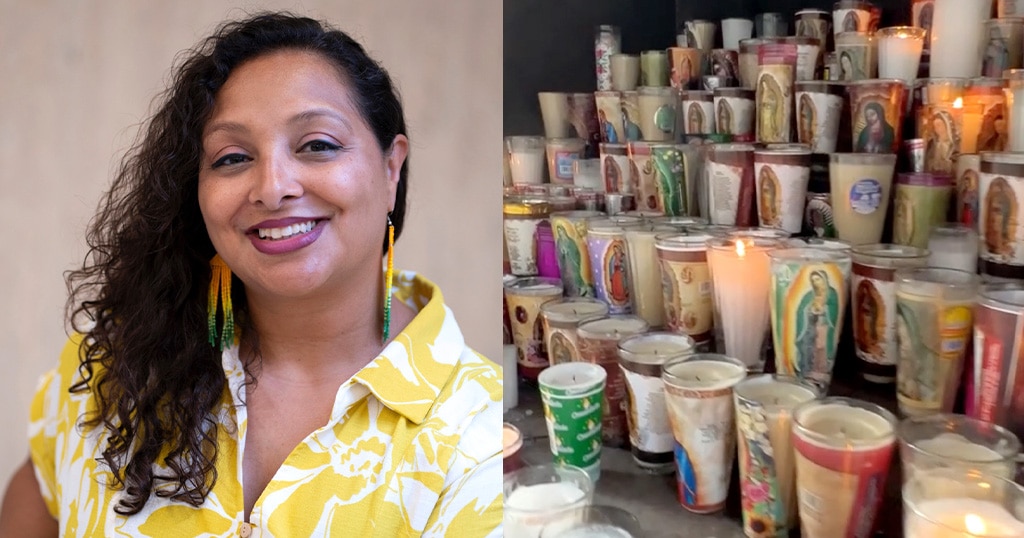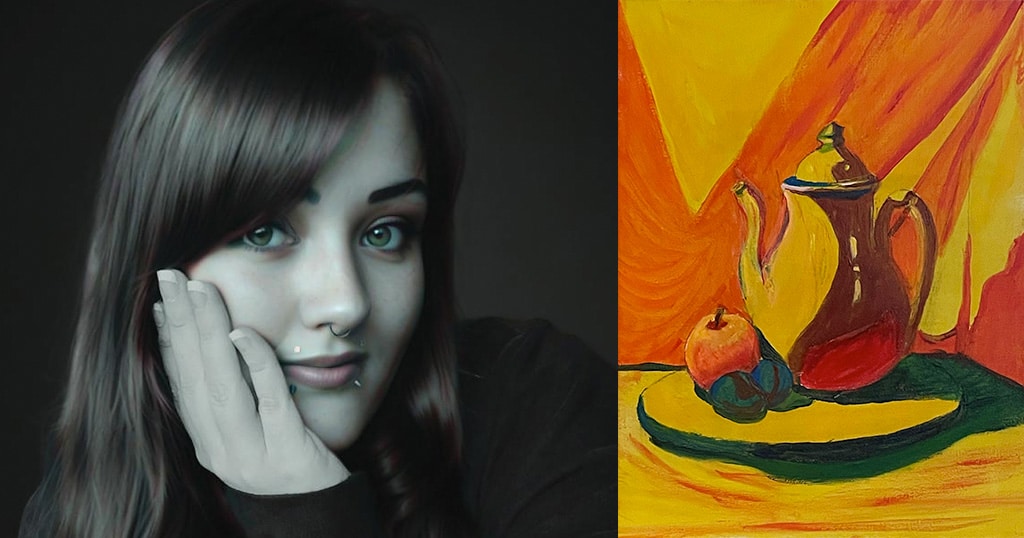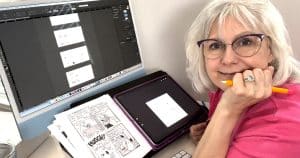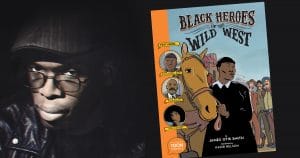An Artist Explores the History of Paper Making
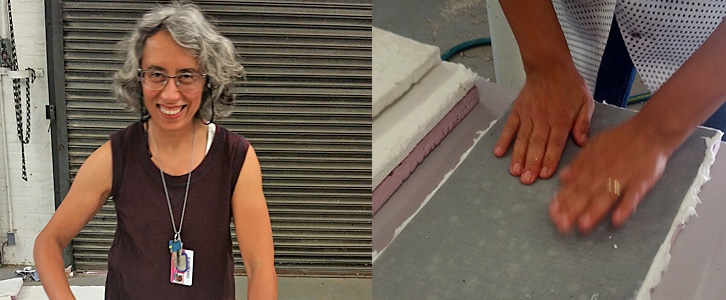
Fiorella’s project as artist-in-residence was to explore the history of paper-making, a mission that took her from historic Massachusetts to an ancient papermill in Fabriano in her native Italy and back…
Q: Can you tell us how the project got started. How did you get introduced to the Crane Museum?
This is a pretty funny story. For 26 years, I’ve known about the Crane Museum in Dalton, MA, and I’ve always been curious about visiting it. When I left my corporate job I had the opportunity to step back and consider what is most important in life. I finally went to visit the Crane Museum and I fell in love with the simplicity and the magic of the process of making a piece of paper – from scratch.
During my visit, I met Museum Director Peter Hopkins who is an expert in paper making and saw him demonstrate the process. He explained it so well that he made it look simple and enjoyable, and he showed us some artwork that had previously been made in the museum. Something clicked in my head, and the next day I showed returned and showed him my portfolio of sculpture, etching, and painting, and he gave me the go ahead for a project.
At that point, I knew that paper making was magic, but I had to spend several weeks experimenting with traditional processes of working with paper, watermarks, embossing, wet and dry embossing, and so on, to explore the possibilities and the strengths and weaknesses of the material.
In the winter of 2016 during a visit to Italy I spent two days in Fabriano, site of one of the oldest paper mills in the world, and saw a reconstruction of early methods of making paper. Loaded with information, ideas, and inspiration, I returned to the Crane Museum, with a large drawing done on Tyvek, a material used in house construction.
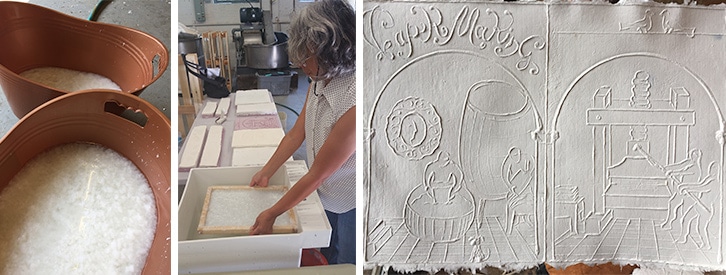
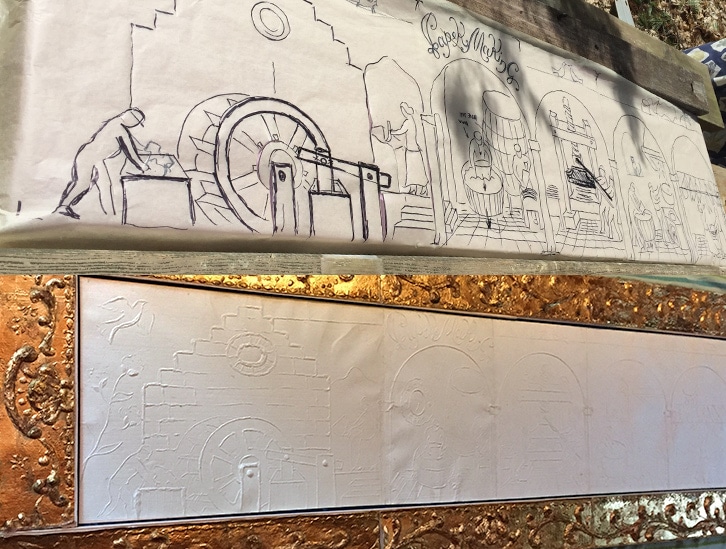
Q: The project is a beautiful mix of elements of paper embossing and bas-relief sculpture. How would you describe the work – what are we looking at?
It’s interesting that you see the two aspects of the artwork! The reality is the play of light and shadow on the material and the optical illusion of convex and concave appearance. All the work was done by pressing wet paper pulp into concave form with a carved out design. The design was carved into the form. Once the paper was dry, the design was lifted out of the form, which reveals the form in relief.
The idea of the project was to illustrate the process of making paper from the collection of used cotton rags, to the manual shredding of rags, the boiling, the pulp making, the sieving of the pulp on a metal screen, the processing of the sheets to remove excess water under a press, to the sizing to protect the surface of the paper, so that the paper is not too absorbent to inks, to the dying process.
I developed the design with quick sketches in my sketchbook before I drew them at larger scale, and finally then I attached a large piece of paper on the wall to draw it a life size so that I could step back and see the work at a distance. The images of paper making come from historical material that I collected from Fabriano, from the Crane Museum, and from the Internet.
Q: What were the challenges and discoveries in creating the artwork? How did the experience deepen your relationship with the Crane Museum?
There were many challenges. The traditional process of dry embossing is time consuming and expensive because it is done with metal. I had to dig into my long experience as an artist, my rigorous training as an architect, and my love for science and physics in order to figure it out.
I started experimenting with various techniques and I found out that carving the design and applying a later of paper pulp was giving interesting results. The biggest problem was dealing with different shrinkage during drying process because thin flat areas of paper, and areas cut with thicker pulp, were drying at different rates.
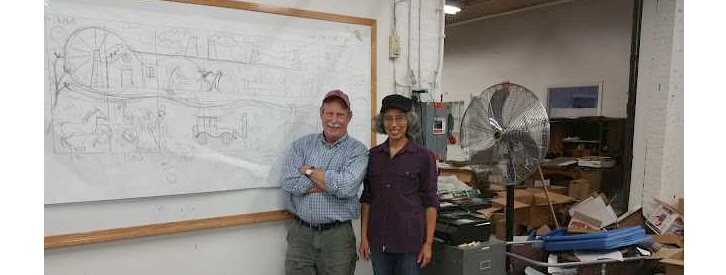
Above: Museum Director Peter Hopkins and Fiorella Shalat
By doing my project at the Crane Museum, I was fortunate to work with with Director Peter Hopkins. I could ask Peter questions that only an authority in paper could answer. The two of us worked together to solve the problem of drying flat areas and high embossed areas evenly.
We did not solve the problem in a day, but his encouraging input kept me going. Eventually I did what I knew needed to be done in the first place – pressing the paper between a negative and and positive form. I was dealing with three different materials: the form into which I carved the design was plastic, the paper I pressed into it was wet cotton (90% water and 10% cotton), and the other material I was using to press the paper into the form was plaster.
Q: You must be very proud of the project.
At the end of the day, I have a lot of white hair – and perhaps a few more after the project! But I made it. It came out beautiful and I think I pushed the embossing process in a way that is very creative and fun and give a nice effect. I created this spontaneous, flowing line that is translated into paper, maintaining a contrast of flat and abruptly raised areas, keeping it sharp and crisp.
The process of making paper is simple, but making good paper is hard! No wonder there are only a few paper mills left in the world.
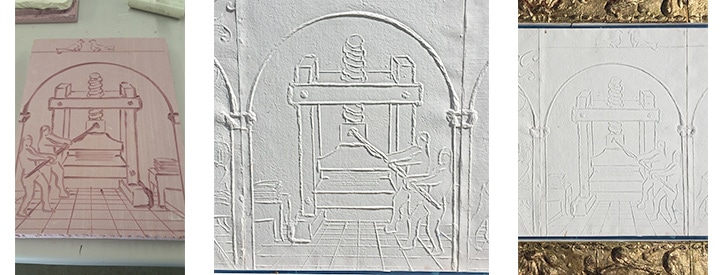
Q: What will happen to the work now that your residence is over? What are your plans for future projects?
The finished project will be hung in the museum and we are planning a celebration of the project and I am experimenting with creating a line of wall art to be available to the public. Anyone who wishes to attend should check the Crane Museum Facebook page for more information. I am also planning to organize workshops at the Crane Museum and also in Fabriano in collaboration with the directors of both museums.
I want bring more people and show more people how wonderful it is to make paper by hand. It is relaxing, it changes your mood. There is nothing as satisfying as making something from scratch, whether your are cooking, making art, music, blacksmithing, or glass blowing. It is a mix of craft, art, and creativity.
For more information on the Crane Museum and Center for the Paper Arts, please visit crane,com or watch this wonderful Youtube clip. For information about online art courses and programs at Sessions College, please visit sessions.edu and talk to an Admissions Advisor.
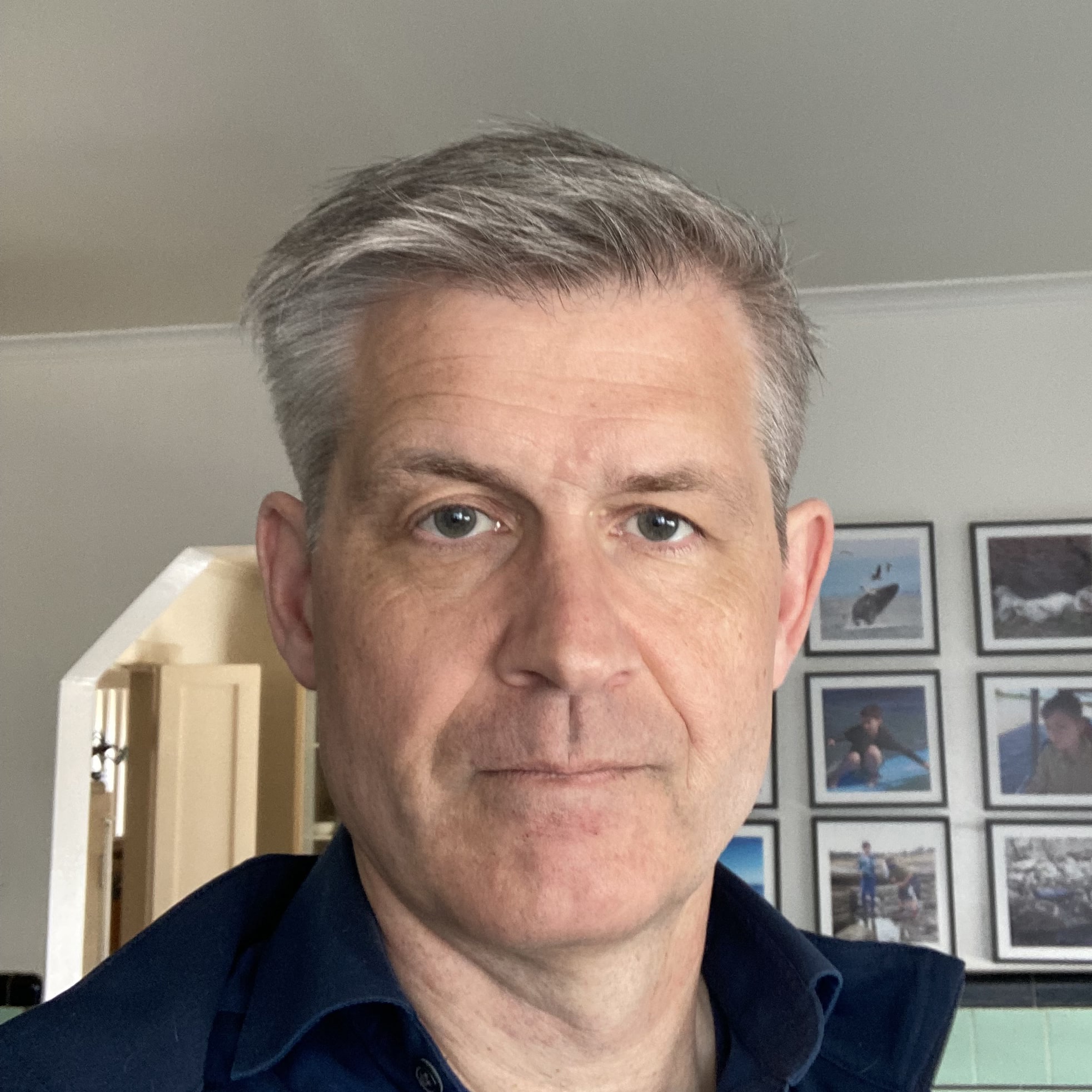
Gordon Drummond is the President of a Sessions College. He's passionate about education, technology, and the arts, and likes to surround himself with talented people. Read more articles by Gordon.
RECENTLY ON CAMPUS























